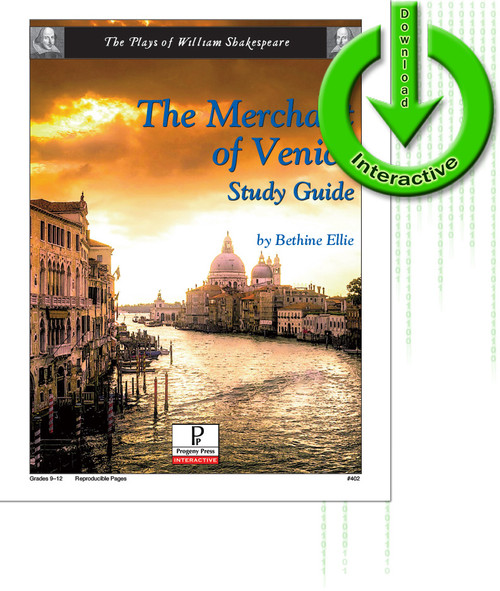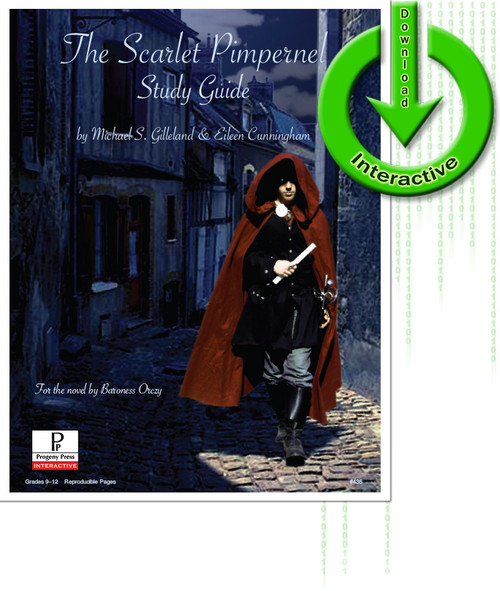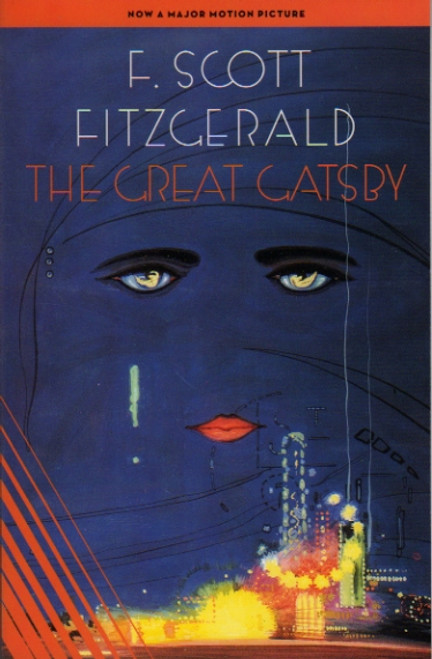Description
Having recently returned from military duty overseas during the Great War, Nick Carraway is restless and tired of his provincial life in the Midwest. He moves East to get into the bond market and soon finds himself living among the idle rich on Long Island. Nick reacquaints himself with his cousin, Daisy Buchanan, and her husband, Tom, and through them he meets the "incurably dishonest" Miss Baker, for whom he begins to develop a romantic interest. Nick soon learns of Daisy's deep unhappiness and Tom's affair with Myrtle Wilson, a married woman.
Before long, Nick is drawn inextricably into their lives and to one man who still believes in the American Dream—Jay Gatsby. As Nick and Gatsby are carried along by forces that neither of them fully controls or understands, they will experience the consequences of materialism, deceit, and petty self-interest.
The Great Gatsby Digital Download Literature Study Guide
Formatted with your High School student in mind, Progeny Press literature study guides provide in-depth lessons and writing assignments that strengthen reading comprehension, expand vocabulary, and develop advanced literary analysis and essay writing skills. Each guide challenges students to think critically and engage meaningfully with the text, without unnecessary busywork that diminishes the joy of reading.
For over 30 years, homeschool families, co-ops, and Christian schools worldwide have trusted Progeny Press to provide rigorous, faith-based English and Language Arts curriculum that inspires thoughtful readers and confident writers.
What Progeny Press' The Great Gatsby Literature Curriculum Digital Study Guide provides your High School student:
ELA Built for Ages 16–18 • Grades 10–12
Our faith-based literature study guide helps students strengthen their reading and comprehension skills through engaging, age-appropriate activities.
English/Language Arts credit: This is a one-quarter credit high school level Literature curriculum.
Author Biography: Learn about F. Scott Fitzgerald and the fascinating background behind the author and novel.
Vocabulary: Understand words used throughout the novel, utilizing a variety of activities to stimulate retention and growth.
Literary Techniques: Character study, personification, imagery, allusion, symbolism, dramatic irony, tone, grammatical change analysis, paradox, juxtaposition, Gothic imagery, title analysis, plot, tragic flaw, theme.
Moral Lessons and Character Values: Ecclesiastes and the pursuit of pleasure, priorities, adultery, struggle between temptation and doing what is right, drunken foolishness, true friendship, camaraderie, materialism, pursuing dreams, self-worth, naivety, living in the past, death, view of God, life goals, Good Samaritan, comfort in sorrow, Christian hopes vs. worldly hopes.
Activities and Writing Assignments: Research 1920s clothing design and textiles and create designs or posters, research: The Lost Generation, Prohibition, the American Dream, materialism, track relationships, literary technique research, T.S. Eliot analysis, art imagery, biblical marriage study, define success, Kant’s philosophies, essays: eyes of God, use of color, compare and contrast, character growth, personal reactions to characters.
Suggestions for Further Reading: We include an in-depth reading list of more books by the same author(s) and other books that tie in with, or are similar to, The Great Gatsby by F. Scott Fitzgerald.
What Will You Need?
A Complete Language Arts Experience with Progeny Press
- A copy of the The Great Gatsby novel
- A copy of the The Great Gatsby study guide
- A Bible (digital or physical)
- A dictionary (child-friendly or online)
Created for upper-level learners, this guide strengthens critical thinking and encourages polished writing while helping students master essential ELA concepts.
Designed for YOU
- Homeschool families looking for Christian literature curriculum
- Schools looking for top quality ELA materials
- Parents wanting to build reading comprehension and character
- Co-ops and small group instruction
These guides work well on their own or alongside your preferred grammar and writing program.
Features and Benefits FAQ - Progeny Press ELA PDF Study Guide:
Why Schools & Families Love Our Study Guides:
- Faith-Based Curriculum: Each guide is rooted in Christian values, helping students grow academically while learning in a faith-aligned environment
- Proven Success: Trusted by homeschool families, co-ops, and Christian schools for more than 30 years.
- Easy to Follow & Open-and-Go: Designed for simplicity and flexibility. Just open and start learning.
- Biblical Connections: Every study promotes meaningful discussions that tie literature themes to Scripture and real-life application.
- Adaptable for Any Setting: Works beautifully in homeschools, classrooms, or co-ops and supports different learning styles and teaching methods.
- Thoughtfully Structured Lessons: Integrates literature analysis with biblical truth, helping students strengthen both academic understanding and spiritual growth.
- Engaging, Hands-On Activities: Includes projects, creative assignments, research papers, writing assignments, and interactive exercises that support reading comprehension and make learning memorable.
- No Busywork: Every activity is purposeful, faith-filled, and designed to deepen understanding—not fill time.
- Comprehensive Literature Coverage: Features classic and contemporary works that build strong literary foundations and critical thinking.
- Support for Parents & Teachers: Includes practical tips, clear instructions, and full answer keys to make teaching simple and effective.
Digital Format Details:
- Download instantly—no shipping required
- Works on Mac, PC, and most tablets
- Fillable form fields allow on-screen answers or easy printing
- No costly software purchases necessary. PDF files open in the FREE Adobe Reader program.
Note: Mobile devices may require an alternative app that supports and saves fillable form fields and interactive features. - Conveniently print what you need, when you need it
- Print the whole ELA study guide at once
- Print single literature lessons or pages as the student completes them
- Print multiple copies of the entire curriculum study guide for classroom sets
All of Progeny Press' language arts PDF download unit lessons are written from a Christian worldview!












